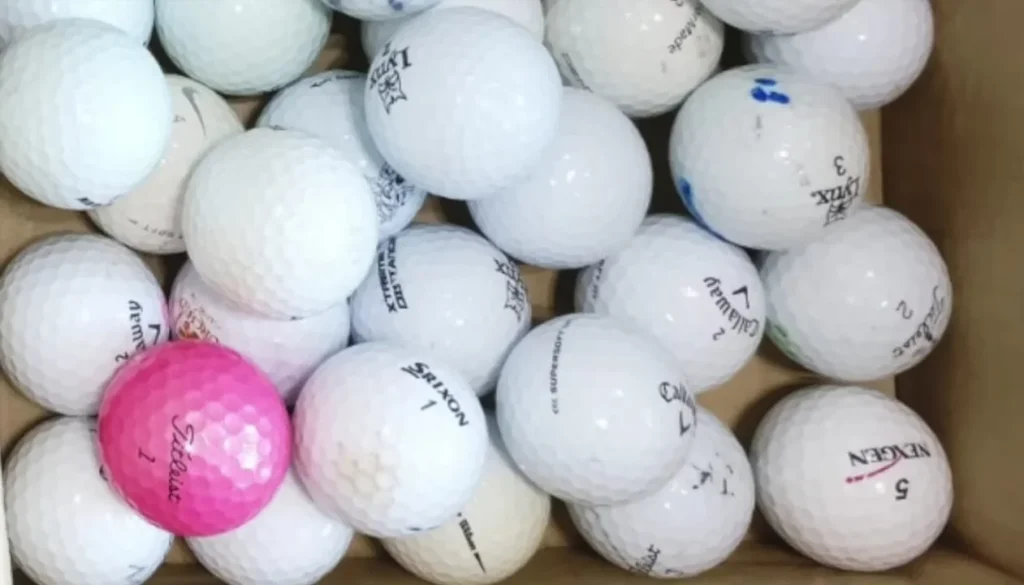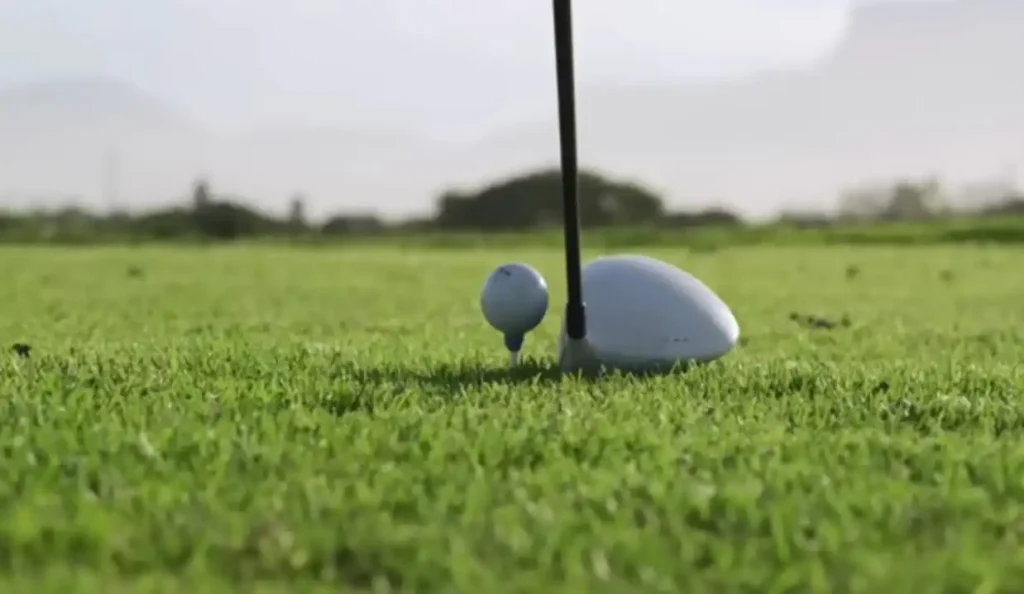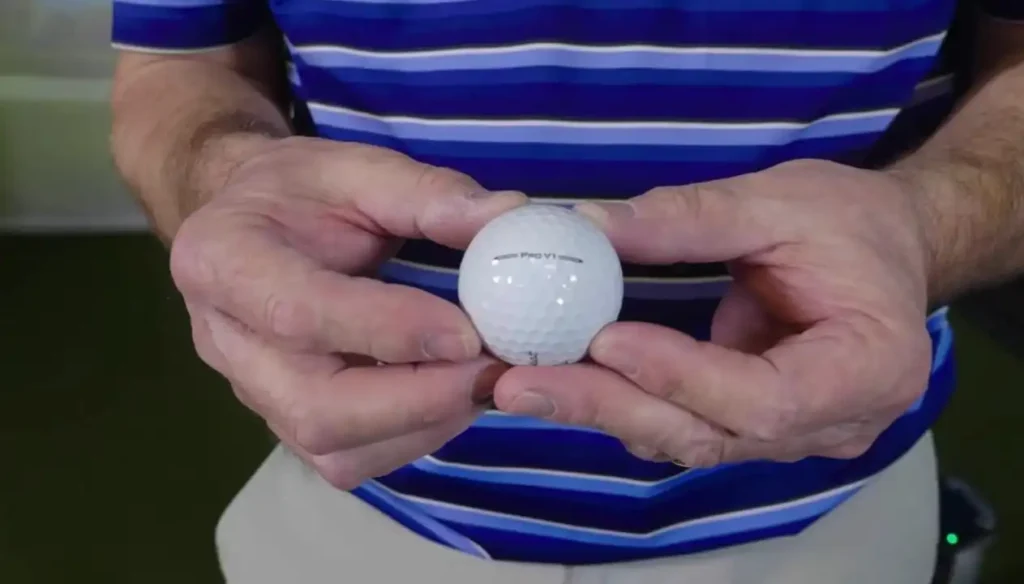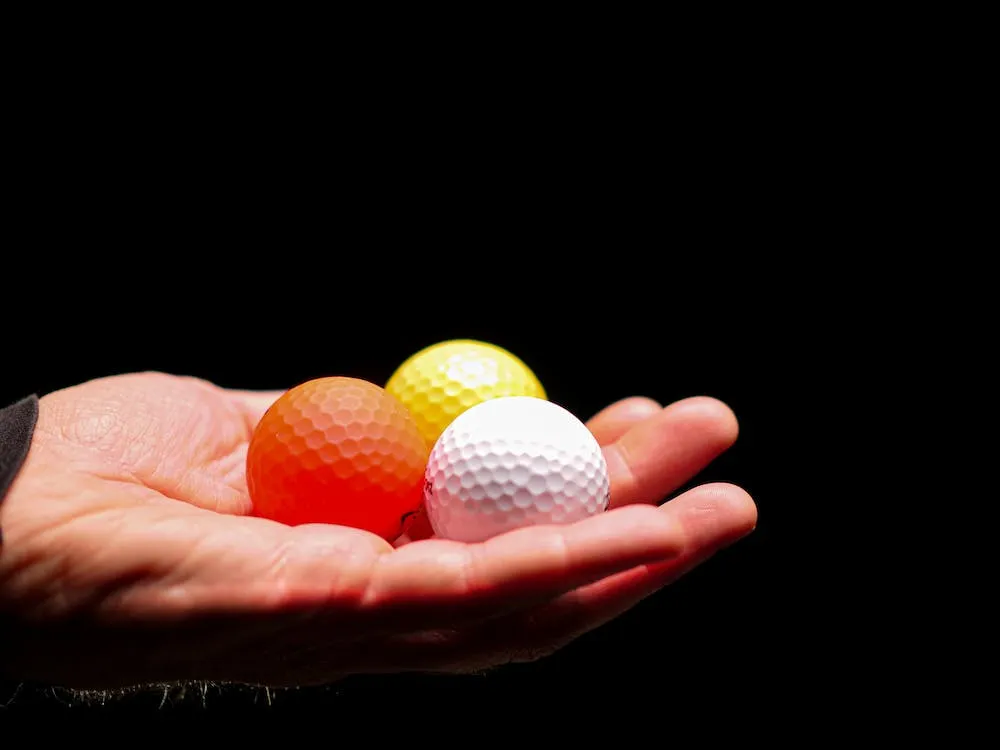Many factors influence the golf ball distance. Weather conditions also affect the right length of your golf ball. As you have correctly guessed, cold weather affects golf balls very differently than warmer weather conditions do. We will explore this phenomenon further by delving into its science as well as all the various variables contributing to your golf ball’s weird behavior under varying weather conditions. So, does a golf ball travel farther in hot weather? If yes then what’s the reason? Let’s find out.

A golf ball travels further in hot weather conditions?
Physics of Golf Ball Flight
Before we dive into how the weather affects your game, let’s first establish the basic physics of golf ball flight. When golfers swing their clubs, several key factors come into play such as angle of launch, clubhead speed, and the rate at which their golf balls spin. All these combined factors will dictate where and in what direction their golf ball travels. Also, the golf ball’s right length will depend on this physics as well.
Air Density
Air density is an essential factor influenced by temperature. In warmer weather conditions, the air becomes less dense compared to lower temperatures, causing significant changes in the ideal golf ball distance. So, how does a golf ball travel farther in hot weather because of this? It has been explained below.
How Heat Affects Air Density
As temperatures heat up, air molecules become more energetic and begin to disperse, leading to lower density. In other words, fewer air molecules will occupy any given volume of space. If a golfer strikes their ball in hot weather, it will experience less resistance due to less dense air. So, the golf ball distance will become greater under warmer weather conditions.
Understanding Golf Ball Compression
Golf is an intricate game where everything from shot placement and golf ball flight depends upon one factor i.e., golf ball compression. But what exactly does this mean? Why does a golf ball travel farther in hot weather due to this reason? To understand that, we should determine compression in detail.
What Is Golf Ball Compression?
Golf ball compression refers to how much the shape of a golf ball changes when struck by its clubface. It is usually measured on a scale of 0 to 100 where the number 70/90 marks the difference between soft and hard golf balls, a subject that we’ve covered on Golfing Gimmicks before. In other words, lower numbers indicate less compression while higher ones indicate greater compression.
Why Does Compression Matter in Golf?
Why does golf ball compression play such an essential part in golf? Compression significantly influences how a ball performs on the course. The golf ball distance wavers a lot in cold weather and under warmer weather conditions. Consequently, this compression will have an enormous effect on your scorecard. So, you have to right the right type of golf ball for the right length of a shot. If you want to learn “Why does a golf ball travel farther in hot weather?” then learn more about why golf ball compression is important:
- Low-Compression Balls: Low-compression balls tend to deform more when meeting with the clubface, making them popular among golfers with slower swing speeds. They can launch more effectively and cover their desired distances even with less forceful strikes.
- High-Compression Balls: On the contrary, high-compression balls are firmer and less likely to deform upon impact, making them suitable for golfers with faster swing speeds and making an energy transfer from clubface to ball more efficient and producing powerful shots that cover greater distances.
How Does Hot Weather Affect Golf Ball Compression?
Weather doesn’t just influence golf as an experience, it has the power to profoundly affect how your ball performs as well. That’s why a golf ball travels much farther in hot weather. Let’s begin at the fundamental level. Hot weather can have a major impact on how a golf ball responds. As temperatures heat up, several changes take place that affect its behavior, such as:
Ball Softening
Under warmer weather conditions, golf balls often soften due to increasing temperatures. While this might seem irrelevant at first glance, bear in mind that softened golf balls become more responsive to swing force and impact with clubface impact. So, they will cover less golf ball distance.
Increased Ball Speed
The softer golf ball can experience greater deformation when meeting with a clubface due to heat; more specifically, its surface squishes more upon impact resulting in faster ball speeds which in turn leads to greater golf ball distance covered with every swing. You can achieve the right length with this technique. I hope you’re now realizing the answer to this question: “Why does a golf ball travel farther in hot weather?”

Golf Ball Types and Hot Weather
There’s more to a successful golf ball performance than just your swing; its cover material also has a significant effect. In this article, we’ll look at two primary cover materials i.e., urethane and ionomer, and their respective responses in hot conditions.
Urethane Vs Ionomer
Golf balls come in various constructions but their cover material usually stands out more from one another. Let’s compare and contrast these two players:
Urethane-Covered Balls
Imagine it’s a scorching hot day on the golf course and you need the ideal golf balls to perform under relatively warmer weather conditions. Using urethane-covered balls seems like the perfect solution; their design allows them to function exceptionally well under higher temperatures. Also, urethane doesn’t fold under heat’s scorching intensity; it maintains its softness and elasticity under harsh sunlight conditions, giving your game consistent performance in the sweltering heat. When reliability on those scorching summer days is needed, urethane has got your back.
Ionomer-Covered Balls
Does a golf ball travel farther in hot weather if it’s made of ionomer? Now, let’s discuss another contender in this arena i.e., ionomer-covered balls. Although these may be your go-to choice in certain conditions, when temperatures spike suddenly they can present additional difficulties.
Adapting to Warmer Weather Conditions
Golfing under intense sunlight and heat can be both taxing and rewarding, requiring strategic tactics and mindful play to overcome every swing beneath its scorching gaze. We’ve put together some key pointers that will ensure your game stays in check while simultaneously enjoying everyone under its intense gaze.
Making the Right Ball Choice
In warmer weather conditions, selecting the appropriate golf ball is your first strategic move to help improve performance. When making this selection, urethane-coated balls may prove effective, as they tend to excel when temperatures soar. Urethane golf balls do not buckle under heat. Instead, they remain soft and resilient for consistent performance round after round. When sweat is on your brow and the sun blazing down on you on the course, selecting the appropriate golf ball can make all the difference in maintaining an edge on the course. So, stop worrying about why a golf ball travels farther in hot weather and choose the best golf ball for you.
Hydration Is Your Secret Weapon
Hot weather can be a tough challenge to your energy and focus. Hydration can help keep you on top of the game. Always carry a water bottle and drink regularly between swings to stay hydrated and remain up for the challenge of golf. Doing this not only keeps your body ready for action physically but can also boost mental sharpness. Learn how pro golfers stay hydrated in the scorching heat of provinces like Arizona and manage to get the most suitable golf ball distance.
Monitor Ball Flight
In hot temperatures, golf balls have been known to take on a life of their own when played outdoors, often becoming unpredictable and moving in ways you weren’t used to seeing before. They might soar with more enthusiasm or curve in unexpected directions than usual. As soon as it gets hot outside, pay careful attention to how your ball behaves in these conditions. Is it flying farther or spinning differently? Don’t just swing blindly. Adjust your shots and club selection according to what you see. Adaptability is a golfer’s best ally in hot climates.

Conclusion
So, does a golf ball travel farther in hot weather? Overall, hot weather does contribute to an extended journey for golf balls on the fairway. Many factors come together in this regard, such as reduced air density, increased ball compression, and the choice of cover material all play their parts. Yet individual results may vary based on which ball was selected and the specific swing style used by each golfer.
Read this article to learn more about how weather can make or break your game.
Be mindful when stepping onto the tee box on a hot summer afternoon. Remember that heat may work to your golf ball’s advantage and propel it closer toward its intended target green. Compression and high temperatures create an exciting combination that keeps the game exciting and unpredictable.
FAQs – Does A golf ball travel farther in hot weather?
How do I keep my golf balls warm when it’s freezing cold?
In cold weather, keeping golf balls at an acceptable temperature is critical to their performance and longevity. You can store them in your pocket or use hand warmers as necessary to prevent them from freezing over.
Do golf balls go further in hot weather in normal conditions?
Do golf balls go farther in hot weather usually? Golf and other balls travel further in hotter temperatures due to lower air density; therefore, their speeds increase and cover longer distances with ease.
What does a high-compression golf ball mean in simple words?
A high-compression golf ball features a firmer core that deforms less when struck by the clubface; these balls are intended for players with faster swing speeds.
How many times can you hit a golf ball before it loses compression?
The frequency with which golf balls lose compression depends upon factors like their construction and force of impact; typically, though they should retain it through multiple rounds.
How do you even tell if you are compressing the golf ball?
One way of telling whether or not you are compressing correctly is to observe its flight and feel it upon impact. A well-compressed ball will exhibit a solid feel and follow its desired trajectory while improper compression could reduce distance and control.
Are there any scientific studies or research that support the idea of golf balls travel farther in hot weather?
Golf teaching professional Andrew Rice found that driving distances increase by about two yards for every 10 degrees rise in temperature. Moreover, a 2018 study found that balls in temperature groups of 18 °C and 32 °C had higher ball speeds and longer carry distances compared to temperature groups of 4 °C and 46 °C. These scientific studies prove that golf balls cover more distance when it’s hot outside.
Can the air density in hot weather affect how far a golf ball travels?
As air molecules spread out, the ball experiences less resistance, allowing it to move more effortlessly through the air. The drag force on the ball can vary by 11.2% between winter and summer conditions. Higher temperatures and lower air pressure found at high altitudes combine to lower the air density. That is how air density in hot weather affects a golf ball’s overall distance.
Are there specific conditions in hot weather that help a golf ball travel farther?
Warm air is less dense than cold air, and warm and humid air is less dense than warm and dry air. Water vapor is made up of oxygen and hydrogen, and hydrogen is the lightest gas. More water vapor in the air mixture makes it less dense, allowing the ball to fly farther. High altitudes and warm weather can cause balls to fly longer. Thee factors make hot weather ideal for golf ball travel.











